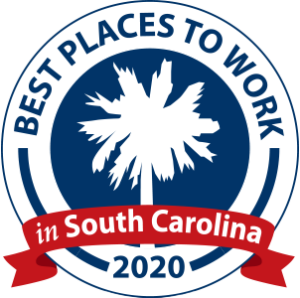
At Kopis, we spend a lot of time having conversations with clients about the best way to apply the latest technology to solve age-old problems.
I want to be clear, though, that when it comes to technology, the move to modern isn’t a one-time event, like moving to a new city. You never arrive at modern–it’s a never-ending cycle of deciding how to apply technology, and the knowledge we’ve gained through technology, in order to improve.
When I look at our history and the work Kopis has done for the past two decades, it’s all been about moving clients’ systems, products, and processes and re-engineering along the way.

We’ve been in custom software development long enough to see the move from legacy mainframe to client servers to web-based apps to mobile apps and, now, to cloud-based services, IoT, blockchain, machine learning, and other emerging technologies.
We’ve also been in this industry long enough to have some insight about the right way to approach this continuous cycle of improvement–which can feel overwhelming and exhausting if you don’t have the right perspective.
Here are three truths we like to remind clients of when they’re upgrading their technology:
It’s About Your Customers
Always remember that the move to the latest technology is not about staying up-to-date with the latest and greatest for its own sake.
It’s about looking at all the tools at your disposal, the way you do business, how your customers interact with your business, and making decisions about how tech can positively impact the customer experience.
For example, if you’re losing customers because you only offer interaction through walk-ins or phone calls, are there opportunities for your customers through mobile?
It’s About Your People
The move to modern isn’t something where you have to go invent new technology. The technology already exists, you just have to look at what you have, what’s available, and decide whether your systems are still working for you internally.
Or, are there better technologies that will help your people work smarter, make better decisions, and focus on the areas where people think best?

Anytime you can eliminate repetitive tasks, such as hand-entered data, make data visualizations occur in real-time, or support productivity by making routine processes automatic, you free your people up to innovate.
Make sure you don’t get it backwards. The wrong technology solution will try to solve everything, forgetting the strengths and weaknesses of technology and people. The right technology solution will support your people as they solve problems and make decisions.
It’s About Your Bottom Line
Ask yourself: “Are there better ways, today, to do what we currently do applying technology?”
Business operations are often based on technology that was available when you first put the processes into place. But, now, the speed of transactions and speed of service has evolved, giving you the opportunity to increase productivity, decrease inefficiencies, and better support your people – which will always improve profit.
Every business has areas where tech properly applied to the right problem at the right time can actually improve what they do, how they do it, what they offer customers and, ultimately, their bottom line.
While modern will always be a moving target (after all, what’s modern today won’t be modern in five years), your approach to technology can remain steady and predictable.
Remember, it’s not about “keeping up” with the latest technology, per se. You don’t have to use an emerging technology just because it’s available. In fact, the most current technology might be bleeding-edge and too risky for your business at the moment.
However, you do have to evaluate your options, remain curious and engaged with technology, and always ask the question: “Does this technology present a significant advantage that will positively impact the way that people interact with my business?”
In doing so, you ensure that your organization will remain relevant and vital, relying on technology to support your business rather than bending your business to adopt the technology.


